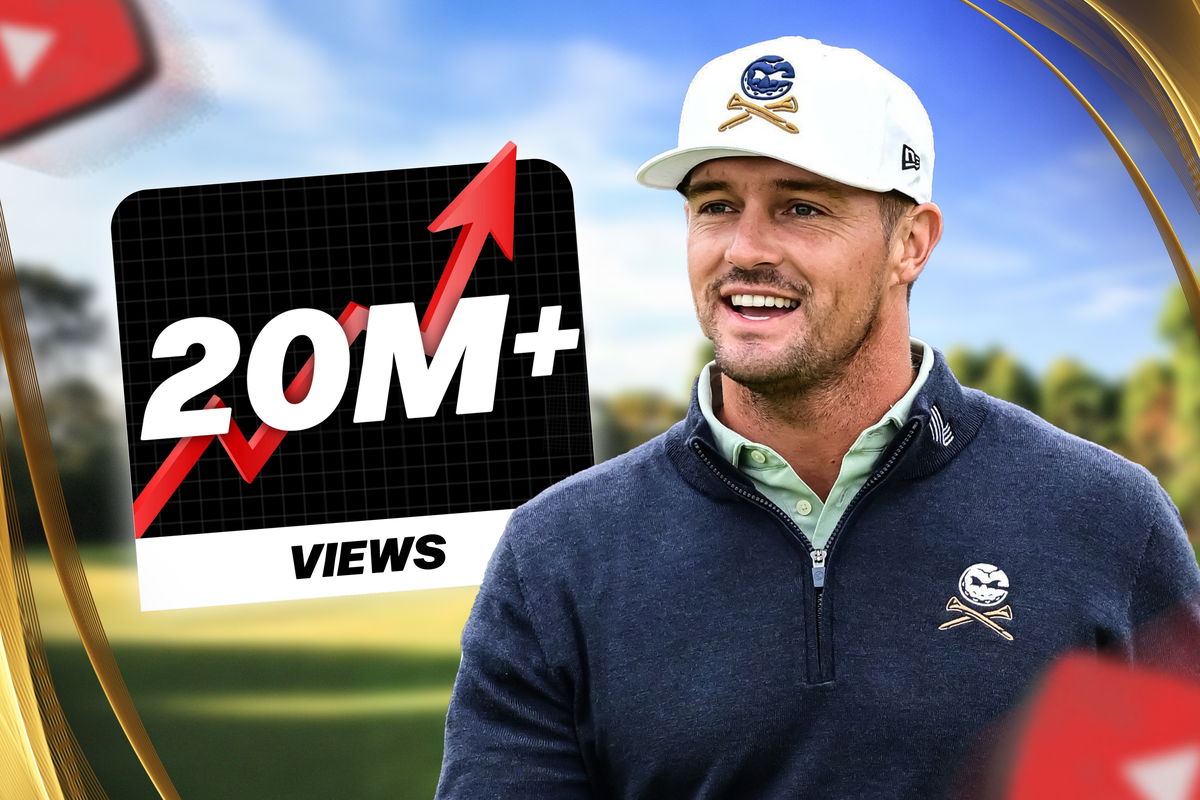

There was a time when YouTube Golf was all the rage. A decade later you can see the telltale signs of a decline. The average attention span of Gen Z is eight seconds, a Microsoft study found in 2015. So, how do you keep your target audience hooked to your content? Especially, when your TA largely comprises Gen Z, and your content is mostly 30-60-minute golf videos? That’s a puzzle many established YouTube golfers tried (and still trying) to solve. But there is also one person who not only solved it but is actually showing a way forward for others. That’s none other than Bryson DeChambeau.
Watch What’s Trending Now!
The two-time major winner’s YouTube channel has 1.66M subscribers. On average, the Crushers captain is gaining 252M views (a 4% increase) per month. That’s at a time when most in the same ecosystem are struggling to retain their audience. In fact, Pro Golf itself is in a state of decline, with PGA Tour events recording an average 20% slump in TV viewership. So, how did Bryson DeChambeau crack the code? For that, we first need to understand the problems that plagued the industry.
Top Stories
Tiger Woods’ GF Receives Emotional Message from Daughter Kai Trump After Turning 48
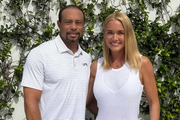
Another PGA Tour Analyst to Leave Golf Channel Days After Cara Banks’ Unexpected Exit – Report

‘Sorry for Your Loss’: Phil Mickelson Sends Prayers as Golf Reporter Opens Up About Daughter’s Passing

Concerns Arise as Amanda Balionis Says She’s Exhausted After Demanding Golf Schedule
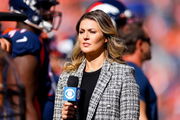
LPGA Legend’s Son, 14, Shows No Remorse After Beating His Mom at Golf
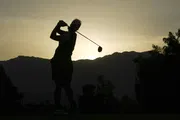
ADVERTISEMENT
YouTube Golf is suffering from the Netflix Syndrome
“I don’t think it’s in the best place right now. I think there’s (sic!) way too many creators, it’s become outrageously saturated… I think really, really good videos are getting punished because unless it’s excellent, it might not get watched.” That was Rick Shiels talking about YouTube Golf in the Rough Cut podcast.
In this world, Shiels is a veteran; the owner of an eponymous channel that has the highest subscriber base in the YouTube Golf space. When he sounds worried about YouTube Golf viewership decline, people take notice. What Shiels was getting at is the Paradox of Choice. The more options you have the more confused you are. The more you feel guilty of buying (watching) the wrong product (video). And since there are too many choices, viewers can hop on from one to the other, without spending time to check the content in full.
That takes a toll on your channel. Shiels was not exaggerating. It wasn’t the bellyaching of a sad King worried about losing his crown. The results are very much out there. Take a look at this table.
ADVERTISEMENT
| Content Creator | Viewership Decline |
| Good Good Golf | -7% |
| Micah Morris | -23% |
| No Laying Up | -7% |
| BustaJack | -11% |
| Padraig Harrington | -7% |
| Golf Mates | -39% |
| Scratch Golf | -35% |
Source: MyGolfSpy
ADVERTISEMENT
These stats look more jarring when you look at the National Golf Foundation report on golf’s growth.
- 123M Americans are in touch with golf including listening to podcasts.
- 18.4M participated in off-course golf via TopGolf or simulators.
- 5.8M of them belong to the 18-34 years age group.
- 22.4M are very interested in taking up golf, a 45% increase since pre-pandemic.
The target audience is right there. A ripe age group of 18-34 years is taking up golf, who in turn, is more likely to ‘Like, Comment and Subscribe’ in droves to these influencers. Except they aren’t. It’s a surprisingly asynchronous growth for this fledgling industry. This again validates Shiels’s concern about YouTube Golf’s viewership decline.
ADVERTISEMENT
Interestingly, Shiels – knowingly or unknowingly – was actually echoing his peer, Grant Horvat. The latter, speaking in the same podcast sometime before him, uncannily highlighted the exact same points. Saturation. Lack of creativity.
And one certain Bryson DeChambeau who has been defying the odds.
ADVERTISEMENT
How Bryson DeChambeau bucked the trend
In a period of overall viewership decline, Bryson DeChambeau is thriving. Here ‘thriving’ denotes pulling 17.4M-subscribers-a-month kind of growth. That’s an actual number; 17.4M people watched DeChambeau’s videos in June. The YouTube high watermark is 17.6M a month by Good Good.
DeChambeau, unlike his YouTube Golf predecessor, Padraig Harrington, isn’t into offering tips. The two-time major winner actually followed the path less traded upon by pros – making fun and entertaining golf videos. Take the recent hole-in-one challenge for example.
DeChambeau (or his team) came up with the unique idea of hitting an ace. From the front yard to the backyard towering over his $2M mansion. The catch was he would do it every day till he made one. Within a few days, it became people’s morning coffee routine. Did he make it? Or not?
ADVERTISEMENT
That spawned a host of subsidiary challenges set by a number of golf influencers, or just random folks down the local muni. It was the talking point of Golf Twitter for two weeks till Bryson DeChambeau finally made it. That’s how DeChambeau separated himself. Here was a pro golfer trying to make an ace at his home. Anyone with a backyard putting green was able to ‘try it at home’ and they did. Take this kid for example. Next day if he hops on YouTube whose channel do you think he would subscribe to first?
View this post on Instagram
It was the exact opposite of everything Shiels or Horvat was concerned about. Bryson DeChambeau’s content strategy was refreshing, innovative, and entertaining. Now, DeChambeau is still what you would call a rookie in YouTube golf – Shiels has been here for almost a decade, some others even 15 years. DeChambeau, meanwhile, reinvented himself and revamped his channel barely 18 months ago. So how did he do it? Well, a bit of luck and a lot of hard work.
ADVERTISEMENT
Breaking down Bryson DeChambeau’s YouTube success
DeChambeau’s content might be fun. But the Crushers GC captain takes his social media commitment as seriously as he does his range sessions. Here are some factors we noticed played a big role in his channel’s growth:
ADVERTISEMENT
Authenticity:
DeChambeau was seen as a sort of pompous dude with moderate success on the greens. Then YouTube happened and it gave the LIV golfer a chance to show a side of himself hitherto unknown to fans. A sincere golfer who deeply cares about fans. Actually, DeChambeau’s partnership with John Daly happened on popular demand. He asked his followers on his X handle, and Daly was the most common name that popped up. DeChambeau listened, which brings us to our next point.
Relatability:
Before DeChambeau’s arrival, there were few things in common between a pro golfer and your regular weekend golfer. Expect when they three-putted or sailed their drives straight to the water. In DeChambeau golf fans found a more humane athlete. The Pinehurst gallery was chomping to his beats. Then DeChambeau decided to walk down lower Broadway in Nashville with the US Open trophy hanging by his hand. He has established a symbiotic relationship with his audience, something that other non-pro YouTubers couldn’t do at a larger scale because of their obvious limitations.
Innovation:
This is where Bryson DeChambeau had a headstart over someone like Grant Horvat. In the latter’s own words, “The concept of Break 50 was so good, and the guests… he can pull off the guests because he is Bryson DeChambeau.” The LIV Golfer has brought some of the bigwigs to tee off with him. Phil Mickelson. Sergio Garcia. John Daly. Tom Brady. Christ Pratt. And then there was Donald Trump at the height of the US Election campaign. That video alone garnered over 13M views. That month he gained over 400K new subscribers. Here is what that spike looks like.
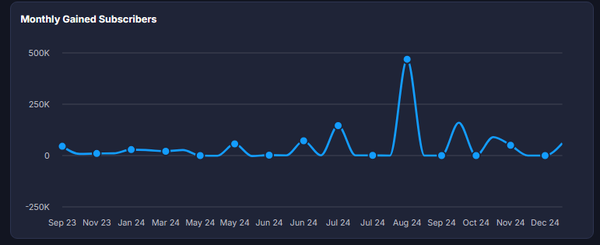
Imago
Image Credits: vidIQ
Timing:
Bryson DeChambeau saw a vibrant space on YouTube, an almost uncharted territory for pro golfers. First, his videos – we are talking about PGA Tour days – were about behind-the-scenes footage. Slowly, he moved away from there and hired a team of content producers. Since then Bryson DeChambeau’s content strategy has been staggering. Better quality videos with more engaging narratives and innovative storytelling.
Strategizing:
DeChambeau’s channel now includes a diverse range of clips. Playing with a hickory club or a Walmart $100 golf club. Teeing off with fellow YouTube colleagues, and then playing with junior golfers. Again, take that Hole-in-challenge for example. Across social media channels like YouTube, Instagram, and TikTok, that series of videos pushed 841K people to follow him. In the last year, golf fans have watched over $2B minutes of his YouTube videos, per noted Sports business analyst of this country, Joe Pompliano.
Research also suggests that 59% of Gen Z actually watch short forms on other platforms and later watch full-length content on YouTube. DeChambeau regularly posts snippets from his YouTube videos on the platform aside from creating short-form content specially for the app.
Pompliano theorized DeChambeau’s rise thus. “When YouTube golfers – professional and amateur – create content it allows millions of people to enjoy the sport of golf without having to tune in to the vast majority of PGA Tour’s 36 annual events.” DeChambeau got the drill and executed it perfectly. And his ripple effect is felt across the industry.
How Bryson DeChambeau catalyzed a content flood
There is a significant chunk of the golf populace who follow YouTube golf on a daily basis. PGA Tour? Not so much. So, when you are PGA Tour, not having a Bryson DeChambeau in your squad hurts. Jay Monahan or his advisors realized that. Evidence? Look at the Creator Classic, a nine-hole tournament with golf influencers, hosted before the Tour Championship.
The Tour has also opened a new wing, the Creators Council to learn and implement how to capture Gen Z. Something that Bryson DeChambeau seems to be doing with astonishing dexterity and effortlessness. By the way, DeChambeau’s YouTube subscribers are more than the PGA Tour’s channel. Only three videos on the PGA Tour’s YT channel have more views than the highest-watched video (13M) on DeChambeau’s channel. That’s the result of an elite content strategy from the two-time US Open winner and his team.
Rick Shiels speaking about the 31-year-old said in the Rough Cut podcast, “I think Bryson – what he has done for YouTube Golf is amazing… I think Bryson needed to take a little bit of time to find his feet, and once he has done it, he has done unbelievably well.” In fact, Phil Mickelson, himself is trying to break into the ecosystem. That’s the career option he is considering after retirement.
Moreover, every time DeChambeau was in the majors, LIV Golf’s YouTube viewership went up. Some of that attention was still diverted to popular golf channels on the video-sharing platform. Thank YouTube’s algorithm for that. Each one of DeChambeau’s collaborations with Grant Horvat, Good Good, Rick Shiels, Bob Does Sport, GM Golf, and Peter Finch drew over 1M eyeballs. Some crossed 2M on their channels.
Will DeChambeau’s success change the future of YouTube golf?
The US Open champion is a needle mover in this vibrant ecosystem of YouTube golf. But can DeChambeau continue to do what he is doing? Innovation is the key. Bryson DeChambeau has never remained shy of implementing new technologies. After all, he pioneered 3D-printed irons, longer drivers, and a sucker for data. So, if tomorrow, DeChambeau leverages VR and the industry follows suit, don’t be surprised.
Currently, 53 million US adults use or own VR Systems. It’s projected to reach 3.7B by 2029. 47% of VR users belong to the 18-34 years. Again, a fortuitous overlap with golf’s up-and-coming audience base. Notably, Golf+, the virtual reality golf game has launched with rave reviews from golf enthusiasts. There is reason to believe that the allure of experiencing a round at Shadow Creek (where a regular green fee is $1250) in VR is hard to resist. If you look at the broader industry trends, it is evident that everywhere brands are catching up with VR. So, if the future of YouTube Golf lies in virtual reality, it will hardly be a surprise.
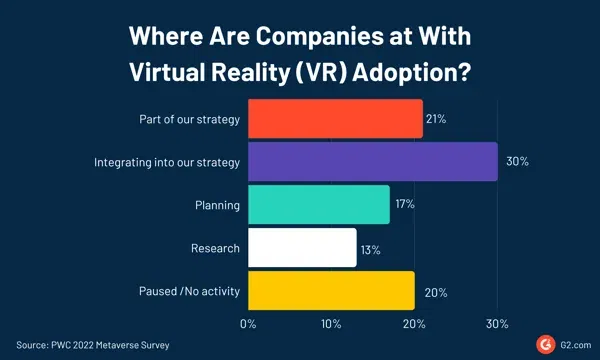
Imago
Source: G2
The potential of YouTube Golf as an industry is also colossal. From TaylorMade to Callaway, equipment giants are roping in golf influencers faster than they are signing pros. It’s a mutually beneficial relationship helping equipment and apparel giants cut through a younger demographic. “These influencers are no longer a niche. If you want to reach an audience of fanatical golfers and communicate your brand, they’re arguably just as important as what’s happening on tour,” Callaway CMO Nick McInally told Gabby Herzig of the Athletic.
Callaway’s Father’s Day commercial now features Good Good Golf members, not some pro golfers. Grant Horvat, a former member of the channel, has TaylorMade as his sponsor. No Laying Up signed a deal with Titleist. It has gone to the extent that Good Good Midwest Open, a gathering of golf influencers and celebrities for a match, was broadcast on Peacock. Good Good Golf, a bunch of golf influencers in their mid-20s, also hosts the Good Good Championship with a purse of $100K where the winner takes 50% of it. So, it might seem the future of YouTube Golf can be only a massive success. While there is immense potential, there are also challenges.
Grant Horvat spoke for a lot when he said that there is only so much you can do with Golf. “At the end of the day, it is just circled around golf… You can only get so creative with Golf. You gotta always remember like when it is circled around golf, the game of golf, you can only go [so far]…” Bryson DeChambeau has surely pushed the frontier forward. But whether he can do it even in the next decade is an open question. So far, the Crushers captain has meticulously balanced his professional aspirations with his YouTube career.
Certainly, LIV Golf’s light schedule has given him those week-long gaps in between. But as we get closer to an agreement between the PGA Tour and LIV Golf, DeChambeau teeing off in a few PGA Tour events is not hopeless optimism. Can he then divide his time between his range session and YouTube content creation? The answer to that lies somewhere in the future. But the Crushers captain has certainly shown a way forward to his fellow YouTube golf icons.
ADVERTISEMENT
ADVERTISEMENT
ADVERTISEMENT

